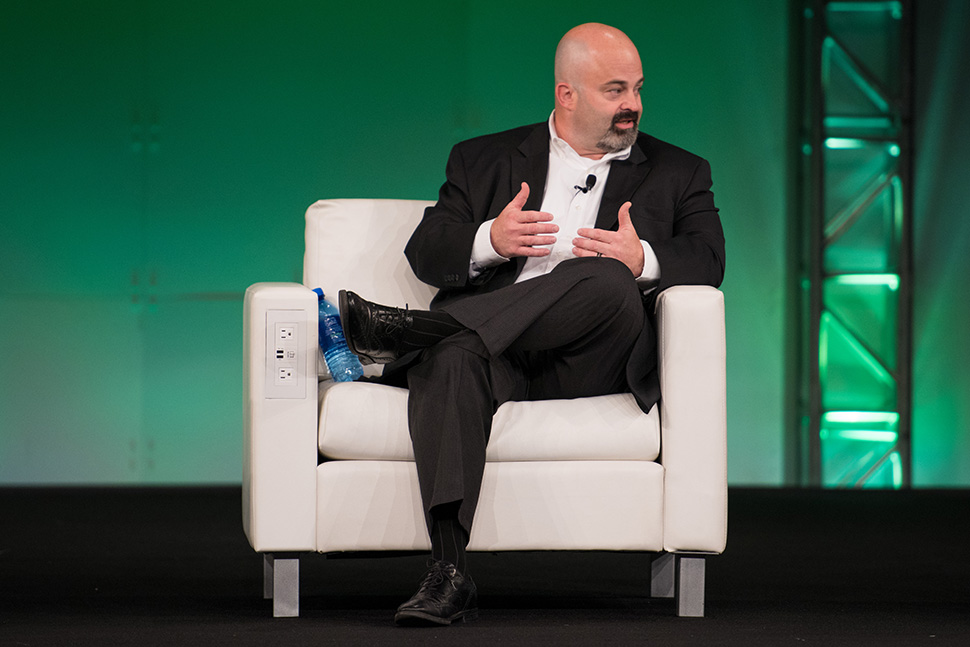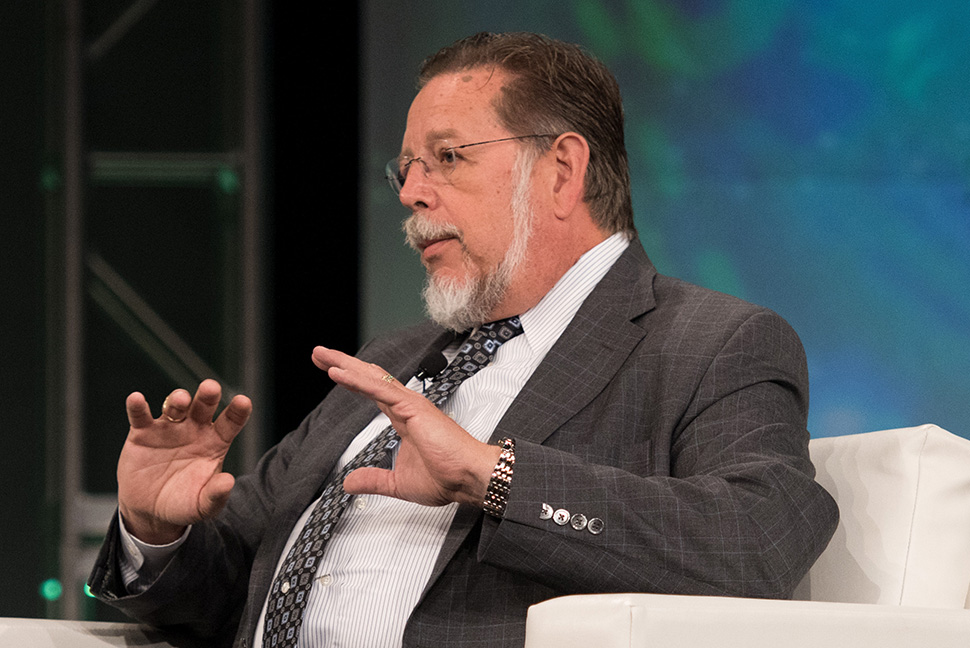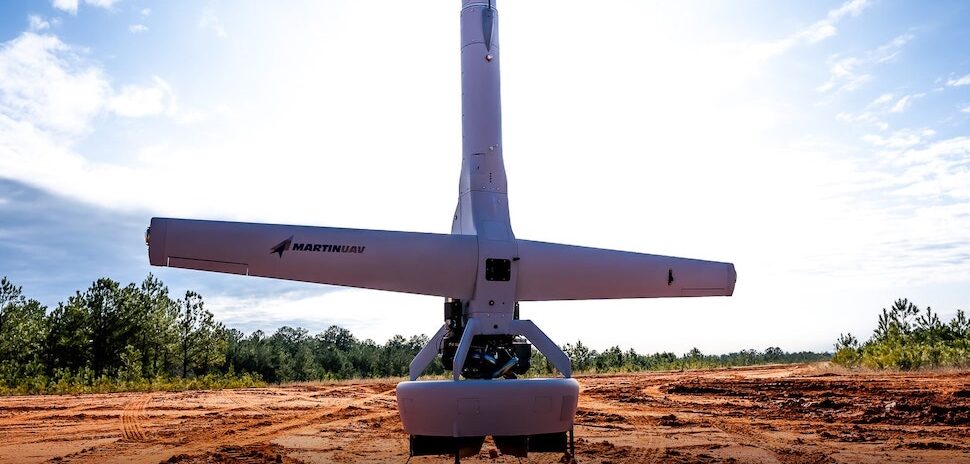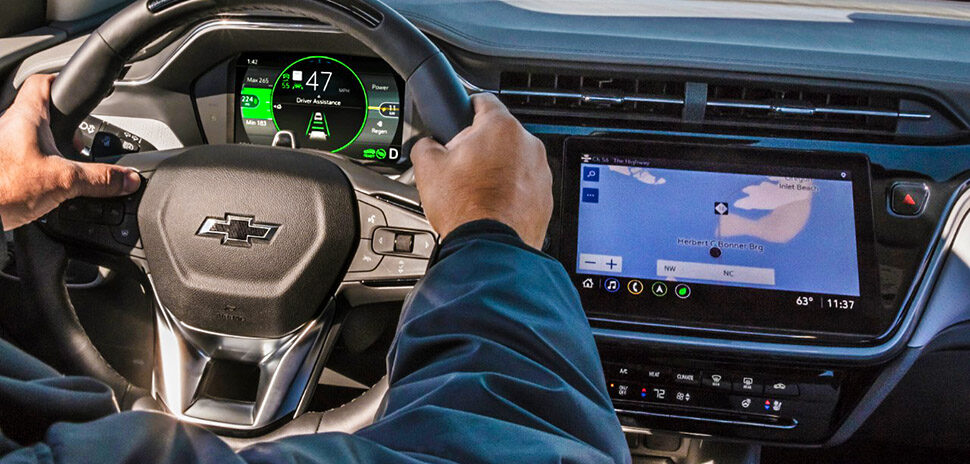Unmanned vehicles are boldly going where divers, helicopters, and workers hanging by ropes have gone in the past.
Industry experts gave insight from the front lines of drone technology at the keynote panel Thursday for the XPONENTIAL 2017 conference at the Kay Bailey Hutchison Convention Center.
The four-day conference featured unmanned technology for hobbyists, commercial uses, and military.
DRONES CAN HELP SAVE LIFES
Drones can save lives by taking the place of human beings in dangerous jobs, such as inspecting towers, smokestacks, or power lines.
But eliminating risk is just the beginning.
They can get projects done 45 percent faster, cut labor costs by 46 percent, increasing profitability, said Mitch Tobias, customer enterprise digital manager for Caterpillar.
“With their same assets they can do twice as many projects in one year.”
Mitch Tobias
“With their same assets, they can do twice as many projects in one year,” Tobias said. “They’re now getting twice the revenue. That’s what grabs our customer’s attention. That’s where we’re on that tipping point where more people are going to adopt that.”
Still, up to 80 percent of business is done the traditional way, meaning there’s massive room for growth in the drone industry.
IS CONSOLIDATION COMING FOR DRONE INDUSTRY?
Drone startups keep popping up throughout the United States and around the world, leaving an industry prime for consolidation.
Airware CEO Jonathan Downey explained why his company acquired Redbird, a French drone analytics firm.
First, it allows Airware to offer a complete solution to its customers.There’s the drones, the software, the cloud-based data processing, analytics, reporting, training, and technical support.
“Industries need to consume this as a complete solution,” he said.
Acquiring a 35-person team in Paris also was a “big win for the company,” Downey said. They want to be able to inspect a cellphone tower for a telecommunications company and a residential rooftop for an insurance company with the same drone.
Downey expects more consolidation in the future.
GOING UNDERWATER
Drones aren’t just for flying, either.
“Industries need to consume this as a complete solution.”
Jonathan Downey
Automated underwater vehicles are being used by offshore oil and gas drillers to do inspections. This is a huge cost savings compared to using tethered remote operating vehicles that require an entire ship and crew to operate, said Brad Tomer, a chief engineer with GE Oil and Gas.
GE’s drone subsidiary, Avitas, recently used an aerial drone to inspect a flare stack. Traditionally, that job has taken a team of workers on ropes a week to finish.
“We can do it in a day with high resolution,” Tomer said.
They also use them to see inside storage tanks.
“We can unleash a crawler in a tank and let it do its things without putting a human in,” Tomer said. “If we can do the whole package and sell it to the operator, their business model just gets simpler.”
DRONES ARE HELPING IN NEWS GATHERING
The Sinclair Broadcast Group has 80 drones deployed coast-to-coast that they use to get aerial views when news happens.
Sinclair, which owns 173 stations in 81 markets, plans to double that by the end of 2017.
Mark Aiken, senior vice president of advanced technology for Sinclair, said executives at public companies typically want to avoid risk as much as possible.
News agencies have typically used helicopters to capture news, but Aiken argued that drones have far less risk.
“Which would you rather have crash in your backyard?” he asked.
Of course, neither, but the drone would be less damaging.
“The last thing the news wants to be is the news,” he said. “Fake news or otherwise.”
Television stations in North Texas have started using drones to capture footage of storm damage, for example.
Additional Reading
All Things Unmanned: Dallas Innovates First Look

Exponential’s keynote panel, Unmanned Systems Shaping the Enterprise, was moderated by Dyan Gibbens, founder and president of Trumbull Unmanned. Panelists included Brad Tomer of GE Oil and Gas; Jonathan Downey, CEO, Airware; Mark Aitken Sr., VP, Advanced Technology, Sinclair Broadcast Group; and Mitch Tobias, Customer Enterprise Digital Manager of Caterpillar. [Photo: Michael Samples]

Mitch Tobias, Customer Enterprise Digital Manager, Caterpillar [Photo: Michael Samples]

Mark Aitken Sr., VP, Advanced Technology, Sinclair Broadcast Group [Photo: Michael Samples]

Jonathan Downey, CEO, Airware [Photo: Michael Samples]

Dyan Gibbens, founder and president of Trumbull Unmanned moderated the keynote panel, Unmanned Systems Shaping the Enterprise.

Brad Tomer






![A NASA illustration depicts the idea of a future air taxi hovering over a municipal vertiport. [Rendering: NASA/Lillian Gipson and Kyle Jenkins]](https://s24806.pcdn.co/wp-content/uploads/2021/06/DRC-NTCOG-NASA-970-970x464.jpg)



























